FlashStack with Oracle Database on Cisco UCS and Pure Storage for SAP Application Servers
Available Languages
Bias-Free Language
The documentation set for this product strives to use bias-free language. For the purposes of this documentation set, bias-free is defined as language that does not imply discrimination based on age, disability, gender, racial identity, ethnic identity, sexual orientation, socioeconomic status, and intersectionality. Exceptions may be present in the documentation due to language that is hardcoded in the user interfaces of the product software, language used based on RFP documentation, or language that is used by a referenced third-party product. Learn more about how Cisco is using Inclusive Language.
The Cisco Unified Computing System™ (Cisco UCS®) is a next-generation data center platform that unites computing, network, storage access, and virtualization into a single cohesive system. Cisco UCS is an ideal platform for the architecture of mission critical database workloads.
Cisco® Validated Designs include systems and solutions that are designed, tested, and documented to facilitate and improve customer deployments. These designs incorporate a wide range of technologies and products into a portfolio of solutions that have been developed to address the business needs of customers.
Database administrators and their IT departments face many challenges that demand a simplified Oracle deployment and operation model providing high performance, availability and lower TCO. The current industry trend in data center design is towards shared infrastructures featuring multitenant workload deployments. Cisco® and Pure Storage have partnered to deliver FlashStack, which uses best-in-class storage, server, and network components to serve as the foundation for a variety of workloads, enabling efficient architectural designs that can be quickly and confidently deployed.
The intended audience for this document includes, but is not limited to, sales engineers, field consultants, database administrators, IT managers, oracle database architects, and customers who want to deploy SAP Application servers with Oracle RAC 12cR2 or 19c database solution on Flashstack Converged Infrastructure and the Cisco UCS platform. A working knowledge of SAP Applications servers, Oracle RAC Database, Linux, Storage technology, and Network is assumed but is not a prerequisite to read this document.
The goal of this document is to share how the SAP Application servers can be installed with the Oracle database on FlashStack Datacenter solution.
It is assumed that the FlashStack solution is already setup and there are oracle database instances configured and running.You can either connect the Netweaver application server with the existing Database that is already available or you can create a new Database while installing the SAP application server.
In this whitepaper, the SAP Netweaver AS 7.5 for ABAP has been discussed as an example.
This whitepaper does not cover the installation, configuration of the FlashStack converged infrastructure for Oracle which is beyond the scope of this document.you can refer the Oracle RAC 19 deployment on FlashArray nvme ROCE solution using this CVD https://www.cisco.com/c/en/us/td/docs/unified_computing/ucs/UCS_CVDs/flashstack_oracle_rac_19_nvme_roce_v3.html
Or FlashStack Data Center with Oracle RAC 12cR2 Database on Pure Storage FlashBlade CVD https://www.cisco.com/c/en/us/td/docs/unified_computing/ucs/UCS_CVDs/ucs_flashstack_oracleRAC12cr2_flashblade.html
FlashStack is a converged infrastructure solution with unmatched power, scale, and flexibility. 100% all-flash and built with best-of-breed components from Cisco and Pure Storage, FlashStack’s key differentiators are precisely those that drive enterprise digital transformation: open standards and stateless operation, ample performance and easy scalability, and maximum density and minimal cabling. And while a FlashStack solution provides industry-leading simplicity, flexibility, and efficiency, it is also more economical than legacy disk-based converged infrastructure solutions.
FlashStack runs FlashArray from Pure Storage, the undisputed Gartner storage MQ leader 7 times in a row!
FlashStack provides a jointly supported solution by Cisco and Pure Storage. Bringing a carefully validated architecture built on superior compute, world-class networking, and the leading innovations in all flash storage. The portfolio of validated offerings from FlashStack includes but is not limited to the following:
● Consistent Performance and Scalability
◦ Consistent performance including bandwidth and latencies with all flash storage
◦ Consolidate hundreds of enterprise-class applications in a single rack
◦ Scalability design with capability to scale I/O bandwidth to match demand without disruption
◦ Repeatable growth through multiple FlashStack CI deployments.
● Operational Simplicity
◦ Fully tested, validated, and documented for rapid deployment
◦ Reduced management complexity
◦ No storage tuning or tiers necessary
● Lowest TCO
◦ Dramatic savings in power, cooling and space with Cisco UCS and 100 percent Flash
● Mission Critical and Enterprise Grade Resiliency
◦ Highly available architecture with no single point of failure
◦ Non-disruptive operations with no downtime
◦ Upgrade and expand without downtime or performance loss
◦ Native data protection including snapshots
● Flexible Consumption for the full stack
◦ Not a lease - TRUE “by the glass” on-demand consumption model
◦ Supports Cloud-like OPEX economics, unlike competitive platforms such as VxBlock or FlexPod
◦ On-prem, in the Cloud, or for hybrid landscapes
◦ Other CI competitors like Dell/EMC or NetApp cannot offer this across the full stack today.
Cisco and Pure Storage have also built a robust and experienced support team focused on FlashStack solutions, from customer account and technical sales representatives to professional services and technical support engineers. The support alliance between Pure Storage and Cisco gives customers and channel services partners direct access to technical experts who collaborate with cross vendors and have access to shared lab resources to resolve potential issues.
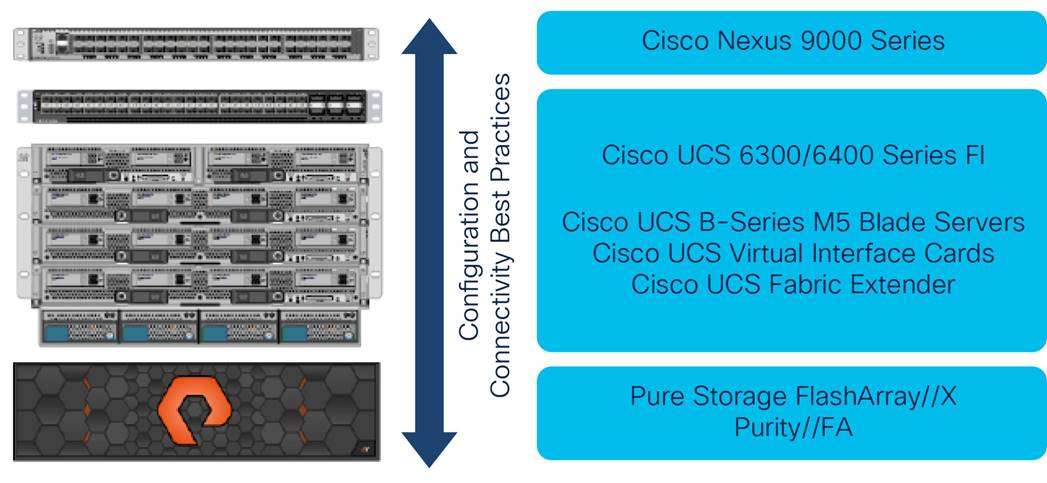
Flashstack System components with Flash Array
As shown in Figure 1, FlashStack Architecture can maintain consistency at scale. Each of the component families shown (Cisco UCS, Cisco Nexus, Cisco FI and Pure Storage) offer platform and resource options to scale the infrastructure up or down, while supporting the same features and functionality that are required under the configuration and connectivity best practices of FlashStack.
Today, both pillars supporting the SAP on Oracle Database strategy are clearly visible and important: Whenever Oracle releases a major new database feature, a development effort is needed to integrate it into the SAP architecture as well as the installation, administration and monitoring tools provided by SAP. Whenever SAP releases a new application optimization, a similar development effort is needed to integrate it with the Oracle Database technology.
Oracle RAC databases often manage the mission critical components of a customer’s IT department. Ensuring availability while also lowering the IT TCO is always their top priority. This FlashStack solution for Oracle databases delivers industry-leading storage, unprecedented scalability, continuous data access, and automated data management for immediate responses to business opportunities.
As we are already aware, a SAP application landscape has 3 tiers:
1. Presentation Layer
2. Application Layer or Business logic Layer
3. Database Layer.
Scalability is key for a successful implementation of an SAP solution.Based on the business growth, SAP provides scaling using two and three tier deployment architectures as follows:
● A two tier architecture uses a single server for all SAP applications,except the presentation layer. This implies that the presentation layer is installed as one tier and the application and database layer is mapped to the second tier.
● A three tier architecture implies that each of three logical tiers maps to an individual set of one or more physical servers.
Advantages of two tier Architecture:
● As the application and database layers are on the same host, this architecture will give excellent performance, as there is no additional overhead for database connections, network traffic, and there is no shadow processes.
● The two tier approach makes a simpler administration for smaller installations.
Advantages of three tier Architecture:
● The application tier can be scaled separately from the database tier to provide both, load sharing and high availability in each tier. Temporary work loads can be easily managed by temporarily adding more application servers. Enterprise SAP application implementations typically use a three or multi-tier architecture to allow smoother deployment of high availability for individual component or tier.
● Larger installations can also utilize the additional performance that can be achieved from this type of deployment.
The flexibility of the SAP software gives the opportunity for organizations to choose the best approach whether on a two, three or multi-tiered architecture.
An SAP application landscape is a group of two or more SAP systems. A SAP system has one or more SAP instances across one or more servers. A traditional SAP landscape may consist of one or more of the following types of SAP instances:
● Production system (PRD)
● Development system (DEV)
● Test and Quality Assurance (QA) systems
SAP NetWeaver Applications platform
The SAP NetWeaver platform is the base for many SAP solutions, including the popular SAP Business Suite. It enables the composition, provisioning and management of SAP applications across a different software environment.
NetWeaver applications work on three layers. The application server (AS), the central services instance (ASCS) and the database layer (DB). The application layer does most of the processing workload, along with the ASCS system, and uses the database layer to store the results. All the parts are mandatorily required, and organizations should plan if it require high availability (HA). Multiple instances of the application servers can be used to provide HA and handle additional load, and similarly organizations can protect the ASCS and DB instances as needed. These instances can all share the same server, or operating system instance, or can be separated out each to their own. They can run physically on the server, or on virtual servers through the use of a hypervisor.
As explained in the previous SAP Landscapes section, Cisco UCS servers can be placed in all the three layers of the Landscape to have a complete Cisco UCS server infrastructure for the SAP Landscape. Depending on the workload which is calculated using the SAP Quicksizer, Cisco UCS servers can be chosen from the following.
The enterprise-class Cisco UCS B480 M5 Blade Server delivers market-leading performance, versatility, and density without compromise for memory-intensive mission-critical enterprise applications and virtualized workloads, among others. The Cisco UCS B480 M5 is a full-width blade server supported by the Cisco UCS 5108 Blade Server Chassis.
Cisco UCS C480 M5 brings the power and automation of unified computing to enterprise applications, including Cisco SingleConnect technology, drastically reducing switching and cabling requirements. Cisco UCS Manager uses service profiles, templates, and policy-based management to enable rapid deployment and help ensure deployment consistency. It also enables end-to-end server visibility, management, and control in both virtualized and bare-metal environments. The Cisco UCS C480 M5 is a storage- and I/O-optimized enterprise-class rack server that delivers industry-leading performance for IMDBs, Big Data analytics, Virtualization workloads and bare-metal applications.
The Cisco UCS C240M5 and C220M5 are high-density 2-socket rack server that delivers industry-leading performance and efficiency for a wide range of workloads, including virtualization, collaboration, and bare-metal applications. The Cisco UCS C-Series Rack Servers can be deployed as standalone servers or as part of Cisco UCS to take advantage of Cisco’s standards-based unified computing innovations that help reduce customers’ TCO and increase their business agility. It incorporates the Intel Xeon Scalable processors, supporting up to 20 percent more cores per socket, twice the memory capacity, and five times more NVMe PCIe SSDs than the previous generation of servers. These improvements deliver significant performance and efficiency gains that will improve your application performance
Each of these servers allow for a great variety of configurations for memory, CPU, storage and I/O.Though you can use many of these variations to support SAP applications, we typically recommend a specific optimized subset for simplicity.
Figure 2 shows an example of SAP application server connectivity in the FlashStack Datacenter solution.
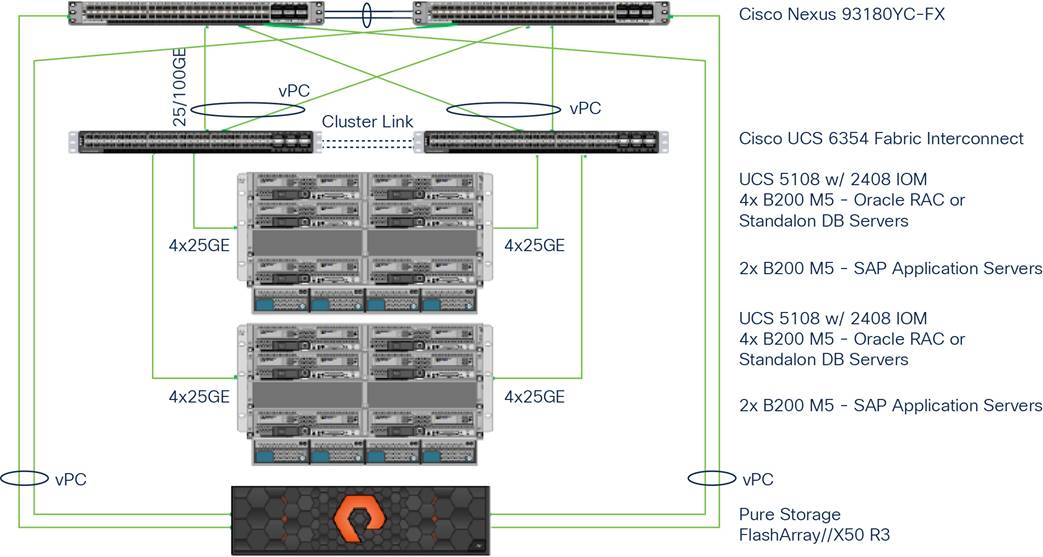
Example connectivity picture showing SAP application servers in the FlashStack Datacenter solution
Pure Storage FlashArray//X accelerates, consolidates and simplifies running business critical applications. While lowering storage spend with FlashArray//X, organizations can dramatically reduce the complexity of storage to make IT more agile and efficient.
FlashArray//X R3 provides up to 25 percent better performance than previous generations. This translates to more database transactions, faster queries and an overall improvement in the speed of business processes. If organizations have even higher performance requirements, DirectMemory™ Cache with storage-class memory provides more boost for analytical workloads.
Pure Storage FlashArray™ is a software defined, all flash block storage product catering to multiple business needs and use cases. The FlashArray product line is offered in 2 distinct classes:
● FlashArray//C - Offers exceptional block storage value and density for tier 2 workloads like snapshots, backup and more.
● FlashArray//X - The first all-flash, 100 percent NVMe storage solution designed for a range of solutions deployed on-premises.
Key differentiators of the FlashArray product line are that the storage offers an effortless experience, behaves in an efficient manner by offering deduplication and compression without a reduction in performance and offers an Evergreen™ product model to increase capacity and performance without the need to keep buying new storage products.
The Purity operating environment operates each FlashArray, the software defined solution for flash management, as well as basic and advanced software defined data services and storage API’s. The Purity operating environment offers a range of mechanisms in which effective data protection and business continuity can be implemented without additional licensing.
Some of these mechanisms are as follows:
● Full business continuity with Purity ActiveCluster™
● Multi-site replication
● Space -efficient local and remote snapshots
Pure Storage FlashArray//X is ideal for:
● Accelerating Databases and Applications. Speed transactions with consistent low latency, enable online data analytics across wide datasets, and mix production, analytics, dev/test, and backup workloads without fear.
● Virtualizing and Consolidating Workloads. Easily accommodate the most I/O-hungry Tier 1 workloads, increase consolidation rates (thereby reducing servers), simplify VI administration, and accelerate common administrative tasks.
● Delivering the Ultimate Virtual Desktop Experience. Support demanding users with better performance than physical desktops, scale without disruption from pilot to >1000’s of users, and experience all-flash performance.
● Protecting and Recovering Vital Data Assets. Provide an always-on protection for business-critical data, maintain performance even under failure conditions.
● Consistent Performance. FlashArray delivers consistent <1ms average latency. Performance is optimized for the real-world applications workloads. Full performance is maintained even under failures/updates.
● Lower Cost than Disk. Inline deduplication and compression space savings across a broad set of I/O workloads including Databases, Virtual Machines and Virtual Desktop Infrastructure.
● Mission-Critical Resiliency. FlashArray delivers >99.9999% proven availability, as measured across the Pure Storage installed base and does so with non-disruptive everything without performance impact.
● Disaster Recovery Built-In. FlashArray offers native, fully integrated data reduction-optimized backup and disaster recovery at no additional cost. Setup disaster recovery with policy-based automation within minutes. And, recover instantly from local, space-efficient snapshots or remote replicas.
● Simplicity Built-In. FlashArray offers game-changing management simplicity that makes storage installation, configuration, provisioning and migration a snap. No more managing performance, RAID, tiers or caching. Achieve optimal application performance without any tuning at any layer. Manage the FlashArray the way you like it: Web-based GUI, CLI, VMware® vCenter, Rest API, or OpenStack.

FlashArray//X R3 Specifications
Purity implements advanced data reduction, storage management and flash management features, and all features of Purity are included in the base cost of the FlashArray//X.
● Storage Software Built for Flash—Purity implements global flash management at the system level, including allocation, I/O optimization, garbage collection, and error correction. This drives 100% NVMe-connected raw flash within DirectFlash Modules and eliminates the performance-density limitations and unpredictable latency of large SSDs. Whether providing latency-optimized performance with FlashArray//X, or capacity-optimization in FlashArray//C, DirectFlash exploits the full potential of flash. It provides predictable, consistent, microsecond latency alongside higher throughput and reliability, better efficiency, and ultra-high density.
● Best Data Reduction Available—Data reduction implements five forms of inline and post-process data reduction to offer the most complete data reduction in the industry. Data reduction operates at a 512-byte aligned variable block size, to enable effective reduction across a wide range of mixed workloads without tuning.
● Highly Available and Resilient—Purity implements high availability, dual-parity RAID-HA, non-disruptive upgrades, and encryption, all of which are designed to deliver full performance to the FlashArray during any failure or maintenance event.
● Backup and Disaster Recovery Built In—Purity combines space-saving snapshots, replication, and protection policies into an end-to-end data protection and recovery solution that protects data against loss locally and globally. All functionality is fully integrated in the FlashArray and leverage native data reduction capabilities.
● SAP HANA Scale-Out deployments require a shared NFS volume across all Cisco UCS servers which are part of the SAP HANA instance. For this purpose, Windows File Services APP (also referred to as WFS APP) run on Purity and extend the FlashArray's capability to provide file services like SMB and NFS. Requirements to enable this service are a FlashArray//X20 or higher, a minimum of two 10G Ethernet ports per controller and a Domain Controller (Active Directory).
● Pure1 Manage—By combining local web-based management with cloud-based monitoring, Pure1 Manage allows you to manage your FlashArray wherever you are – with just a web browser.
● Pure1 Connect—A rich set of APIs, plugin-is, application connectors, and automation toolkits enable you to connect FlashArray//X R3 to all your data center and cloud monitoring, management, and orchestration tools.
● Pure1 Support—Pure Storage products are constantly cloud- connected, enabling Pure Storage to deliver the most proactive support experience possible. Highly trained staff combined with big data analytics help resolve problems before they start.
● Pure1 Collaborate—Extend your development and support experience online, leveraging the Pure1 Collaborate community to get peer-based support, and to share tips, tricks, and scripts.
Get storage that behaves like SaaS and the cloud. Deploy it once and keep expanding and improving performance, capacity, density and/or features for 10 years or more – without downtime, performance impact, or data migrations. Our “Right Size” capacity guarantee ensures you get started knowing you will have the effective capacity you need. And our Capacity Consolidation program keeps your storage modern and dense as you expand. With Evergreen Storage, you will never re-buy a TB you already own.
Installing the Oracle Database server for SAP Application server
This document does not cover the installation of oracle database server for the SAP Application servers. Please refer to the SAP Document on Installation of SAP Systems Based on the Application Server ABAP of SAP NetWeaver 7.1 to 7.52 on UNIX : Oracle .In this document you may refer to the oracle database software installation section.
SAP Software Components required for Netweaver AS 7.5 for ABAP Installation
1. SAP Kernel (SAPEXEXX.SAR)
2. SAP Kernel for Oracle DB (SAPEXEDBXX.SAR)
3. SAP Host Agent (SAPHOSTAGENTXX.SAR)
4. DBA Tools for NW (DBATLXX.SAR)
5. SAP Netweaver AS for ABAP Installation Export
6. Internet Graphics Service (IGS) (IGSEXEXX.SAR)
7. Internet Graphics Service Helper (IGSHELPERXX.SAR)
It is assumed that the FlashStack solution is already setup and there are oracle database instances configured and running.You can either connect the Netweaver application server with the existing Database that is already available or you can create a new Database while installing the SAP application server.
Installation of SAP Application server (Netweaver AS 7.5 for ABAP as an example)
Based on the choice of Cisco UCS servers, the servers to run the SAP Netweaver application server has to be chosen.
The SAP PAM points to the relevant SAP NetWeaver installation guides. Ensure that you are familiar with the relevant SAP NetWeaver master and installation guides and the referenced SAP notes within. To find planning, installation, patching, and operation documentation for your task, see the SAP NetWeaver Guide Finder.
For the new installation of an SAP system including an enhancement package you use the standard installation tool Software Provisioning Manager 1.0. The Software Provisioning Manager performs software provisioning processes such as installation, uninstallation, system copy, or system transformation. Software Provisioning Manager is the successor of the product- and release-specific delivery of provisioning tools, such as SAPinst.
The SAP Application server installation can be of Standard System which runs all the 3 components of the Application server in the same Server/Hardware, Distributed System wherein the 3 components reside in different server/hardware and the High Availability system which is for fail over.
The below architecture shows an example of SAP Netweaver Application server 7.5 for ABAP Distributed System.
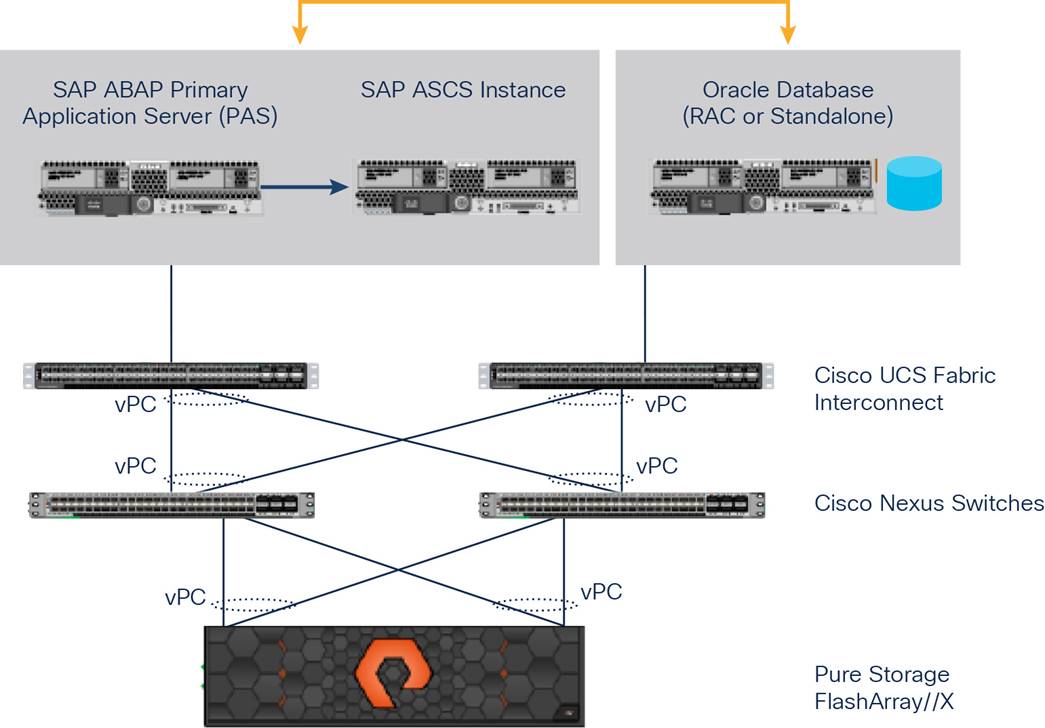
SAP Netweaver Application server 7.5 for ABAP Distributed System
The best practice is to start the SAP installation manually with the SAP graphical user interface (SAP GUI)
Steps to start the installer.
a. Login to the server where the Netweaver application server for ABAP to be installed
b. Open a terminal as root user.
c. Copy the installable files to a local directory on the server.
d. Execute the SAP graphical user interface installer. Eg. (/software/<SWPM Directory>/sapinst
Post Installation and configuration of the system
After installing SAP NetWeaver Application Server, you have many choices to make about how to configure your system. These choices depend on your use case. Use SAP Best Practices to make these decisions or make your own configuration decisions. SAP Best Practices and SAP Rapid Deployment Solutions describe best business practices and best implementation practices for a wide range of SAP software. They are published as packages with assets covering solution design and configuration and, if applicable, configuration templates that you can use in your system.
You will require an SAP Client GUI for connecting to the newly installed SAP system. Use the SAP System ID (SID), Instance Number, and Master Password to check that the SAP system was installed based on the parameters you supplied. To verify the SAP installation
1. Logon to the SAP GUI on the user interface and enter the required parameters
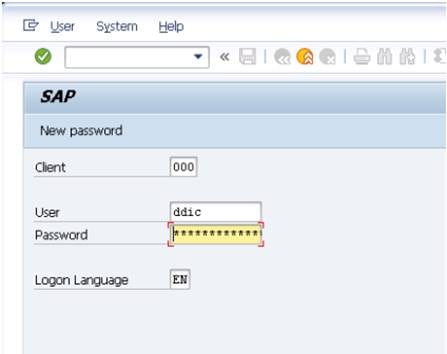
2. Screenshot showing the successful installation of the Netweaver Application server 7.5 for ABAP on a Flashstack Datacenter solution with Oracle Database.
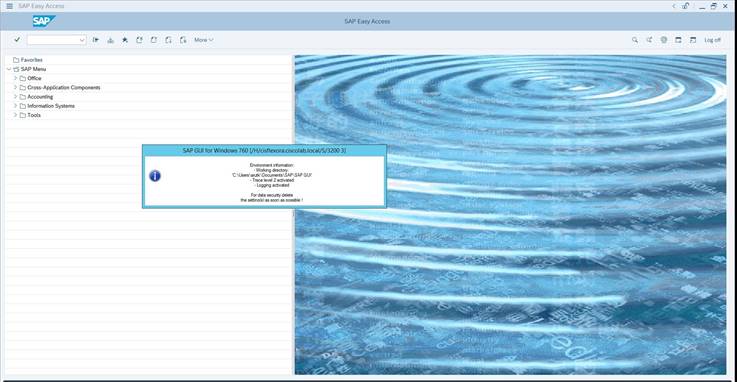
SAP application monitoring with Cisco AppDynamics platform
The Cisco AppDynamics® application performance monitoring (APM) platform helps you understand and optimize the performance of your business applications, from your software to your infrastructure to your business processes.
The AppDynamics APM platform enables you to monitor and manage your entire application-delivery ecosystem, from a mobile app or browser client request through your network, back-end databases, application servers, and more. The AppDynamics APM gives you a single view across your application landscape, letting you quickly navigate from a global perspective of your distributed application down to the call graphs and exception reports generated on individual hosts.
The AppDynamics platform has an agent-based architecture. After the agents are installed, you see a dynamic flow map or topography of your application. The platform uses the concept of traffic lights to indicate the health of your application (green is good, yellow is slow, and red indicates potential problems), with dynamic baselining. The AppDynamics platform measures application performance based on business transactions, which essentially are the main processes of the application. When the application deviates from the baseline, the AppDynamics platform captures and provides deeper diagnostic information to help you be more proactive in troubleshooting and reduce your mean time to repair MTTR).
This SAP application server infrastructure can be monitored with the AppDynamics platform.
The core SAP monitoring components are:
● SAP ABAP Agent: Responsible for business transaction monitoring (communication between SAP and external systems, like the AppDynamics Controller).
● Datavard Insights: Responsible for collecting SAP-specific metrics, logs, and events.
SAP ABAP Agent Architecture
The ABAP Agent uses the AppDynamics C++ SDK wrapped by the AppDynamics HTTP SDK to report business transaction performance metrics and snapshots. The following diagram describes the communication between ABAP Agent and AppDynamics Controller:

Communication between ABAP Agent and AppDynamics Controller
For further information on the AppDynamics SAP monitoring topic please refer to this link https://docs.appdynamics.com/display/SAP/SAP+Monitoring+Using+AppDynamics
Figure 6 presents an AppDynamics map showing the performance of SAP NetWeaver Application Server 7.5 for ABAP that is currently running in the organization.
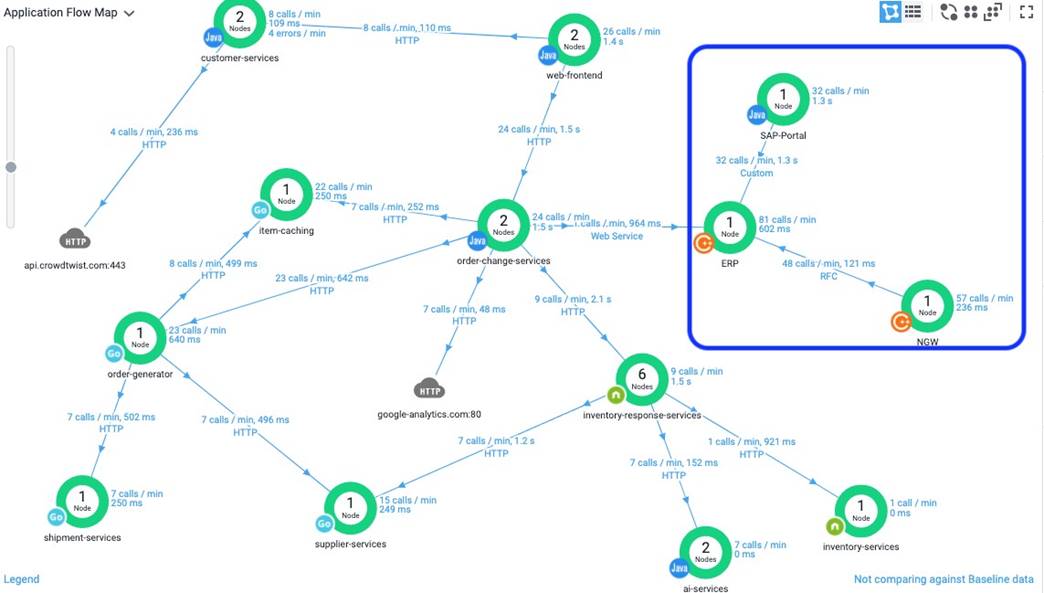
AppDynamics map showing the performance of SAP NetWeaver Application Server 7.5 for ABAP
Cisco Intersight is Cisco’s new systems management platform that delivers intuitive computing through cloud-powered intelligence. This platform offers a more intelligent management level and enables IT organizations to analyze, simplify and automate their IT environments in ways that were not possible with prior generations of tools. This capability empowers organizations to achieve significant savings in Total Cost of Ownership (TCO) and to deliver applications faster to support new business initiatives.
The Cisco UCS platform uses model-based management to provision servers and fabric automatically, regardless of form factor. Cisco Intersight works in conjunction with Cisco UCS Manager and the Cisco Integrated Management Controller (IMC). By simply associating a model-based configuration with a resource through service profiles, your IT staff can consistently align policy, server personality, and workloads. These policies can be created once and used by IT staff with minimal effort to deploy servers. The result is improved productivity and compliance and lower risk of failures due to inconsistent configuration.
Cisco Intersight will be integrated with data center, hybrid cloud platforms and services to securely deploy and manage infrastructure resources across data center and edge environments. In addition, Cisco will provide future integrations to third-party operations tools to allow customers to use their existing solutions more effectively.
In addition, Cisco and Pure Storage have jointly developed the first third-party integration into Cisco Intersight to give you the ability to manage Pure products from within Cisco Intersight.
Cisco Intersight monitors all Cisco UCS servers and switches in the solution and offers cloud-based, centralized management of Cisco UCS servers across all Enterprise locations and delivers unique capabilities such as:
● Integration with Cisco TAC for support and case management
● Proactive, actionable intelligence for issues and support based on telemetry data
● Compliance check through integration with Cisco Hardware Compatibility List (HCL)
● Centralized service profiles for policy-based configuration
● Enables Pure Storage FlashArray//X management capabilities using Intersight Assist
For more information about Cisco Intersight and the different editions, go to: Cisco Intersight - SaaS Systems Management Platform.
Cisco and Pure Storage have partnered to deliver the FlashStack solution, which uses best-in-class storage, server, and network components to serve as the foundation for a variety of workloads, enabling efficient architectural designs that can be quickly and confidently deployed. FlashStack Data Center is predesigned to provide agility to the large enterprise data centers with high availability and storage scalability. With a FlashStack solution, you can leverage a secure, integrated, and optimized stack that includes compute, network, and storage resources that are sized, configured and deployed in a flexible manner.
The following factors make the combination of Cisco UCS with Pure Storage FlashArray//X powerful for SAP and Oracle environments:
● Cisco UCS stateless computing architecture provided by the Service Profile capability of Cisco UCS allows for fast, non-disruptive workload changes to be executed simply and seamlessly across the integrated Cisco UCS infrastructure and Cisco x86 servers.
● Hardware-level redundancy for all major components using Cisco UCS and Pure Storage availability features.
● Integrated, holistic system and data management across your entire infrastructure whether on-premise, in a Cloud, or a hybrid combination of both.
● Purity//FA’s Evergreen solution allows customers to move storage costs from CapEx to OpEx with consumption-based pricing and cloud-like flexibility, even on-prem. Storage never goes out of date and you never run short of capacity.
FlashStack is a flexible infrastructure platform composed of pre-sized storage, networking, and server components. It is designed to ease the IT transformation and operational challenges with maximum efficiency and minimal risk.
FlashStack differs from other solutions by providing:
● Integrated, validated technologies from industry leaders and top-tier software partners.
● A single platform built from unified compute, fabric, and storage technologies, allowing you to scale to large-scale data centers without architectural changes.
● Centralized, simplified management of infrastructure resources, including end-to-end automation.
● Evergreen storage so you will never pay for more storage than you need, but still have ample storage available on demand when you need it.
● A flexible Cooperative Support Model that resolves issues rapidly and spans across new and legacy products.
SAP related Documentation
● SAP Product Availability Matrix (PAM)
● SAP Software Logistics Toolset (SL Tools)
● SAP Software Download Center (SWDC)
Important SAP Notes
● 1680045 Release Note for Software Provisioning Manager 1.0
● 2172935 Installation - SAP Systems based on SAP NetWeaver on Oracle
● 2660020 Central Technical Note for Oracle Database 18c
● 2470660 Central Technical Note for Oracle Database 12c Release 2 (12.2)
● 789220 Support Package levels for SAP NetWeaver installations/upgrades
● 2369910 SAP Software on Linux: General information
Cisco Product information
● Cisco Unified Computing System
● Cisco UCS B-Series Blade Servers
● Cisco UCS C-Series Rack Mount Servers
● Cisco Nexus 9000 Series Switches
Pure Storage Information
● Pure Storage: FlashArray //X series
● Pure Storage: FlashArray //X for SAP applications
● Oracle FlashStack with FlashBlade

